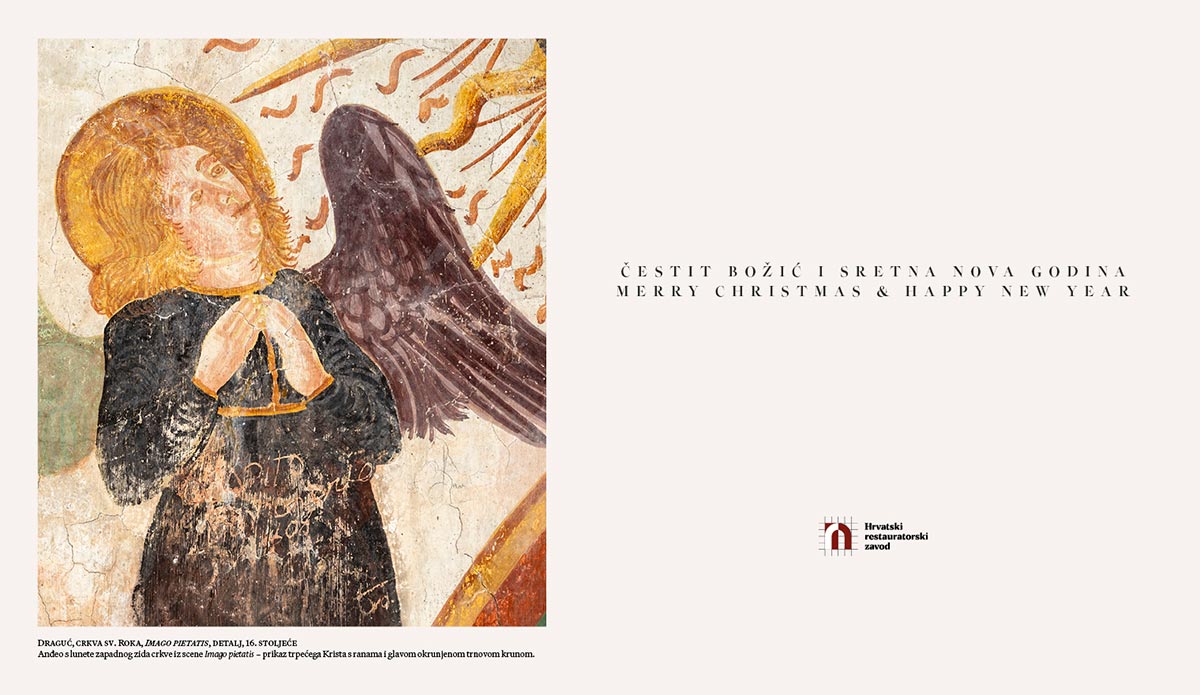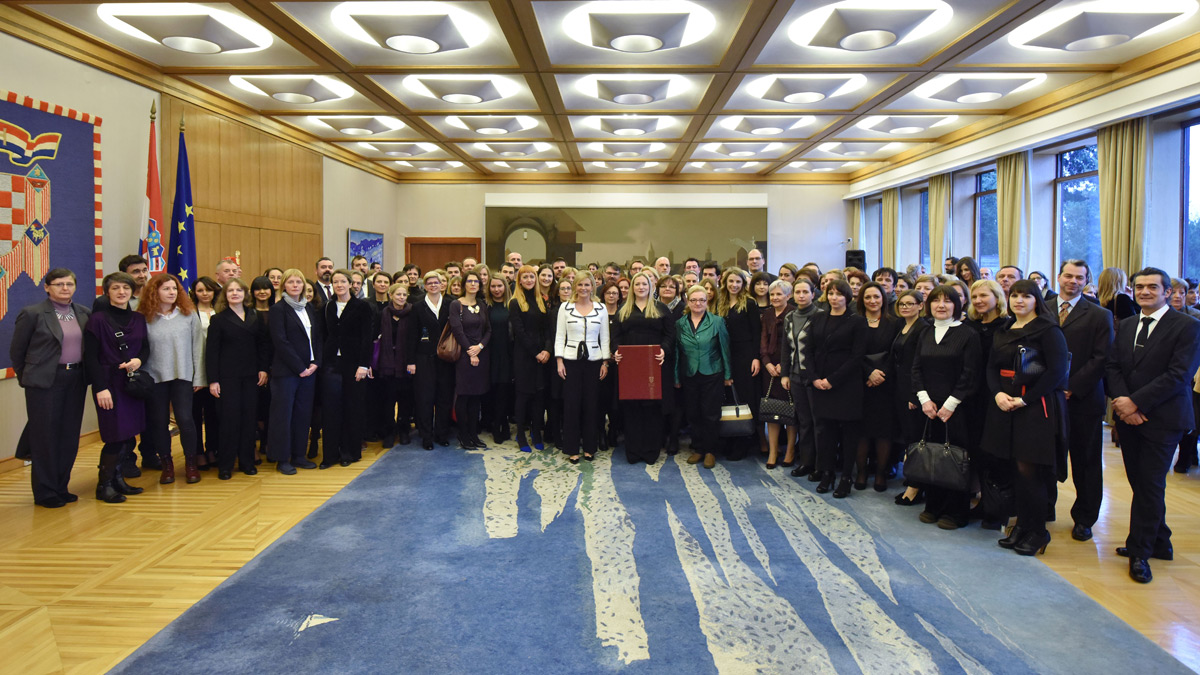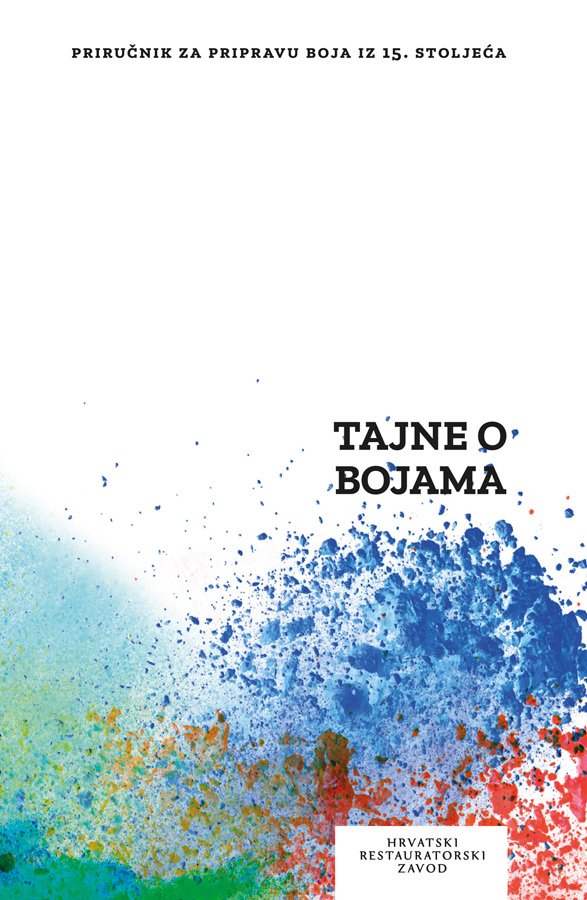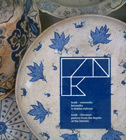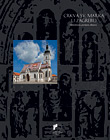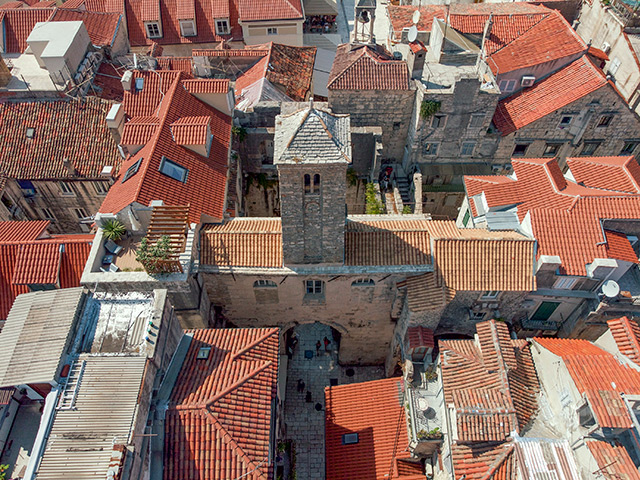
p>Diocletian's Palace in Split is one of the most important Late Antiquity monuments in the world. Due to the historical context of its origin and the state of preservation and exploration, the palace was added to the UNESCO World Heritage List in 1979.
The western (Iron) gate of Diocletian's Palace is one of three land entrances to the palace. In the Middle Ages, the gate became the main communication between the old city centre and the new secular centre. Today, it forms a complex urban ensemble of the People's Square (Pjaca) with the old City Hall, Romanesque clock tower and Nakić, Karepić, Cambi and Ciprianis palaces.
Architectural complex of the Western Gate includes its original ancient layer (doors with a defensive area i.e., propugnaculum) and the medieval church of Our Lady of the Bell Tower, located in the former guard hall. It was renovated at the end of the 11th century when a bell tower was also built. The church was remodelled several times over the centuries, and its current form was shaped in the 18th century.
Croatian Conservation Institute began working on the architectural complex in 2013. So far, a complete architectural survey of the existing condition has been made, historical, archival and conservation research has been carried out, along with partial structural reconstruction and conservation.
Construction repairs were carried out on the church – roof and structure of the sacristy between floors were completely replaced, along with parts of the wooden structure of the choir. Preventive protection of medieval frescoes was carried out on the west, north and east sides of the church façade under the gutters. Inside the church, inventory was inspected and stored, and comprehensive research was conducted. During the conservation process, wall paintings painted in 1932 with motifs of Croatian history by Split painter Mate Menegello Rodić were valorised, strapped and stored, and will later be presented in a museum.
After the bell tower was explored, its construction was repaired and the roof was replaced. At the same time, conservation of the medieval plaster began.
On the north wall of the propugnaculum, a walled-up medieval niche was cleaned and presented. A stone sculpture of hands holding the crown was found, restored and returned to its original position. Furthermore, an ancient double herma was found on the nearby façade of the Cambi Palace. Given the fact that not many ancient sculptures have been found inside Diocletian's Palace, this is an extremely important find to gain a better understanding about its decorative elements. The herma has been restored and will be presented in a museum.
Construction repairs of the bell tower and its presentation, as well as the beginning of conservation on the eastern arch of the propugnaculum are planned for 2021.
The goal is to revitalize the complex of the Western Gate and the Church of Our Lady of the Bell Tower with minimal but much-needed interventions, and thus improve the condition of this extremely busy zone of the old town.
The project is funded by the Ministry of Culture and Media of the Republic of Croatia and the City of Split, with the support of the parish of the Assumption of the Blessed Virgin Mary and company Interspar d.o.o.







